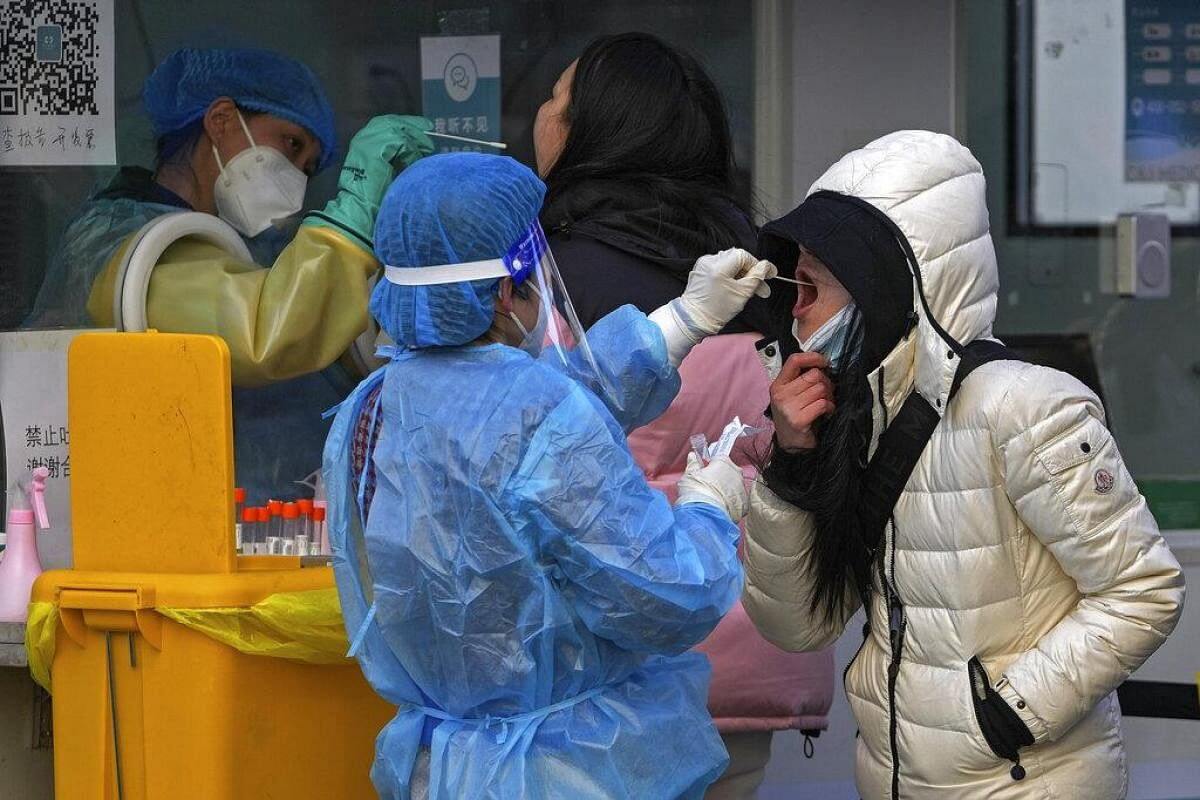China on Monday locked down Yuzhou, a city with a population of around 1.17 million people in the central Henan province, after it recorded three asymptomatic coronavirus cases. It announced that from Monday night all citizens were required to stay home to control the spread of the virus.
According to a statement released yesterday, people in the central area “must not go out,” and all communities have been instructed to set up “sentinels and gates to strictly implement epidemic prevention and control measures.” The city had already announced the closure of transport services, shopping malls, museums, and tourist attractions.
Similar measures in Xi’an, a historic city of 13 million people, have caused residents to run out of food after they were prohibited from shopping for groceries in a fierce lockdown. The report of 95 new COVID infections in the city on Tuesday has further prolonged the lockdown, which has already been in place for nearly two weeks.
China will have great difficulty with #omicron and zero covid policy. They may need@ to join the rest of the world with mitigation strategies. #China should not punish its public health officials or citizens or foreigns because a more transmissible variant…
— Tulio de Oliveira (@Tuliodna) December 25, 2021
Citizens’ plight has further been exacerbated by reports of midnight mass evictions to take some residents to quarantine facilities. Since December 9, of the total 1,690 locally transmitted cases in the country, 1,663 cases were recorded in Xi’an, the Shaanxi provincial health commission said on Monday.
Meanwhile, in the southern province of Guangxi, people violating COVID laws were recently publicly shamed by being paraded through the streets in Hazmat suits with placards around their necks.
China on Tuesday reported 175 new COVID-19 cases. While the reported cases are still low when compared with elsewhere in the world, new coronavirus infections in Chins in recent weeks have reached their highest levels since March 2020. In response to the rising cases, China has been pushed to follow strict zero-COVID policies. Despite more than 80% of the population being vaccinated, authorities have been mass testing where necessary.
Both Chinese vaccines, Sinopharm and Sinovac, have been approved by the World Health Organization (WHO) for emergency use, are already in use in dozens of countries. When it approved the jab in June, the WHO said that studies showed the Sinovac vaccine “prevented symptomatic disease in 51% of those vaccinated and prevented severe Covid-19 and hospitalization in 100% of the studied population” for adults aged 18 and older.
Similarly, a study conducted by Chinese researchers showed that the Sinopharm booster shot has “significantly lower” neutralising activity against the new Omicron variant. The paper also added that the vaccine’s efficacy against Omicron remained unclear. According to the WHO, Sinopharm has an efficacy of 79% against symptomatic infection 14 or more days after the second dose, while its efficacy against hospitalization is 79%. In comparison, other vaccines such as those from Pfizer and Moderna have an efficacy rate of 94% or higher.
The country has also placed severe restrictions on movement at its borders. In fact, Vietnam’s Trade Ministry asked Chinese authorities on Monday to relax their “overly unnecessary” anti-virus prevention measures and ease congestion at border crossings to maintain healthy levels of trade. China has tightened border controls with neighbours as part of a wider zero-COVID-19 policy.
The policies have been met with concern internationally, with scientists believing that the policies may not work and will only further strain locals.

